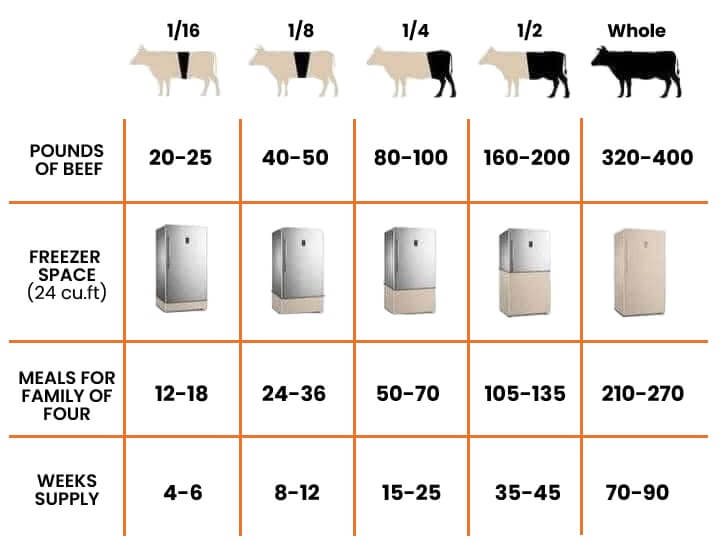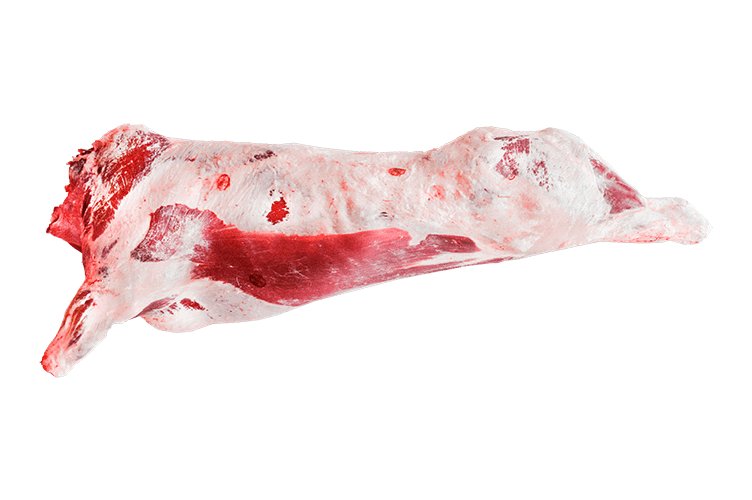
Full Cow
Average weight: 700 – 800 LBS
Approx. cost: $4,000 – $6,000
$3.50 / LB
$1,000
Full cow deposit

Half Cow
Average weight: 350 – 400 LBS
Approx. cost: $2,000 – $3,000
$3.50 / LB
$500
Half cow deposit
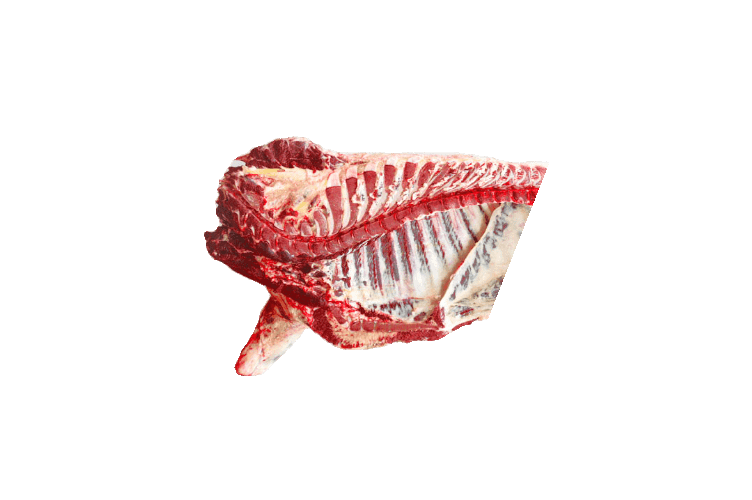
Quarter Cow
Average weight: 175 – 200 LBS
Approx. cost: $1,000 – $1,500
$3.50 / LB
$250
Quarter cow deposit
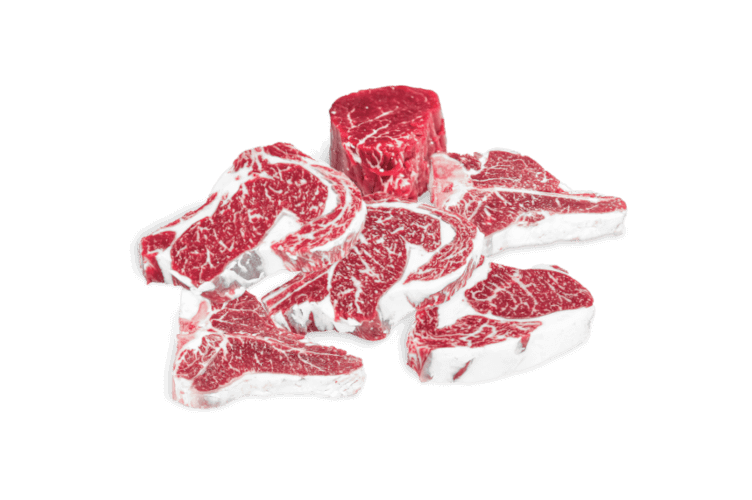
Per Pound Beef
Average weight: 3 – 5 LBS / piece
Approx. cost: $20 – $40 / piece
$7.25 / LB
30%
Per pound deposit
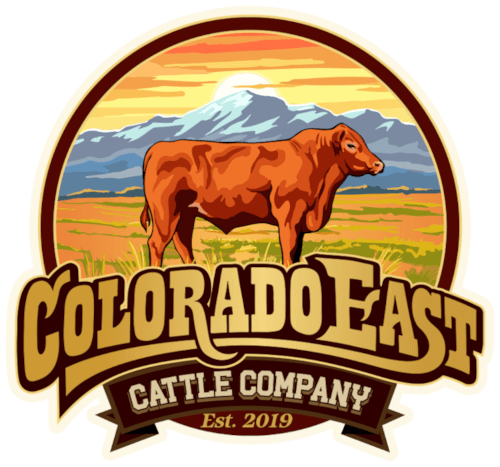
Colorado East Cattle Company
We are a local small ranch based in Calhan Colorado. We specialize in red Angus Grass fed grain finished beef. We handpick every head of cattle specifically for our customers and we raise them with the upmost attention and care. From birth to process, they get the best treatment. Our beef is so good that our customers return every year and our Beef is typically sold out one year in advance. In order to get on our beef you must join our waiting list and pay a deposit.
What you should know about our beef
Our beef is produced from cattle that are grass-fed and grain-finished. This means that the cattle are primarily fed a diet of grass and hay during their early life, and are then finished on a diet of grain for the final few months before slaughter. This approach to raising cattle has a number of benefits.
Grass-fed beef is generally leaner and has a more distinct flavor than grain-fed beef, as the animals are able to express their natural diet through their meat. Grass-fed beef is also higher in certain nutrients, such as omega-3 fatty acids and conjugated linoleic acid (CLA).
Grain-finishing the cattle helps to increase the fat content of the meat and improve its texture, which can make it more tender and flavorful. By using a combination of grass-feeding and grain-finishing, we are able to produce beef that has the best of both worlds – a rich, flavorful meat with a good balance of fat and leanness.
Enjoy Real Beef
Enjoy Real Beef
Experience the rich and natural flavor of high-quality beef, from cattles raised with care and sustainability.
What you should know about processing
In terms of packaging, we offer a range of options to suit different needs. Our beef is available in vacuum-sealed packages, which help to maintain the freshness and flavor of the meat. We also offer portion-controlled packages, which are ideal for those who want to purchase smaller quantities of meat at a time. All of our packaging materials are food-grade and designed to keep the meat fresh and safe.
We hope that this additional information gives you a more complete understanding of our beef and the care that goes into producing it. We are confident that you will be satisfied with the quality, flavor, and safety of our beef.
You have questions? We have the answers!
How are cattle raised for meat production?
Cattle are typically raised on farms or ranches, where they are provided with food, water, and shelter. Cattle are fed a diet of hay, silage, and grain, depending on the stage of their life cycle and the specific needs of the animal. They are also given access to pasture, where they can graze on grass. Cattle are typically raised in a variety of housing systems, including open pastures, feedlots, and confinement facilities.
How are cattle processed for meat?
Cattle are typically slaughtered at a processing facility, where they are humanely killed and the carcasses are cleaned and prepared for meat production. After slaughter, the carcasses are divided into wholesale cuts, which are then further processed into retail cuts and packaged for sale.
How is the quality of beef graded?
Beef quality is graded based on several factors, including the animal’s age, marbling (the amount of fat within the muscle), and the texture and color of the meat. The United States Department of Agriculture (USDA) grades beef based on these factors, with the highest quality grade being “Prime” and the lowest being “Select.” Other countries may have their own grading systems.
How long can beef be stored?
Fresh beef can be stored in the refrigerator for 3-5 days or in the freezer for 3-4 months. It is important to properly wrap and store beef to prevent spoilage and the growth of harmful bacteria.
What are the different cuts of beef and how are they best cooked?
Beef cuts can be divided into several categories: chuck, rib, loin, round, and brisket. Chuck cuts, such as chuck roast, are best for slow cooking methods like braising or roasting. Rib cuts, like ribeye and prime rib, are best grilled or roasted. Loin cuts, including tenderloin and sirloin, are best grilled, broiled, or pan-seared. Round cuts, like round roast and round steak, are best roasted or braised. Brisket is best cooked slowly with moist heat, such as in a slow cooker or over low heat on the grill.
What to expect when buying a cow
